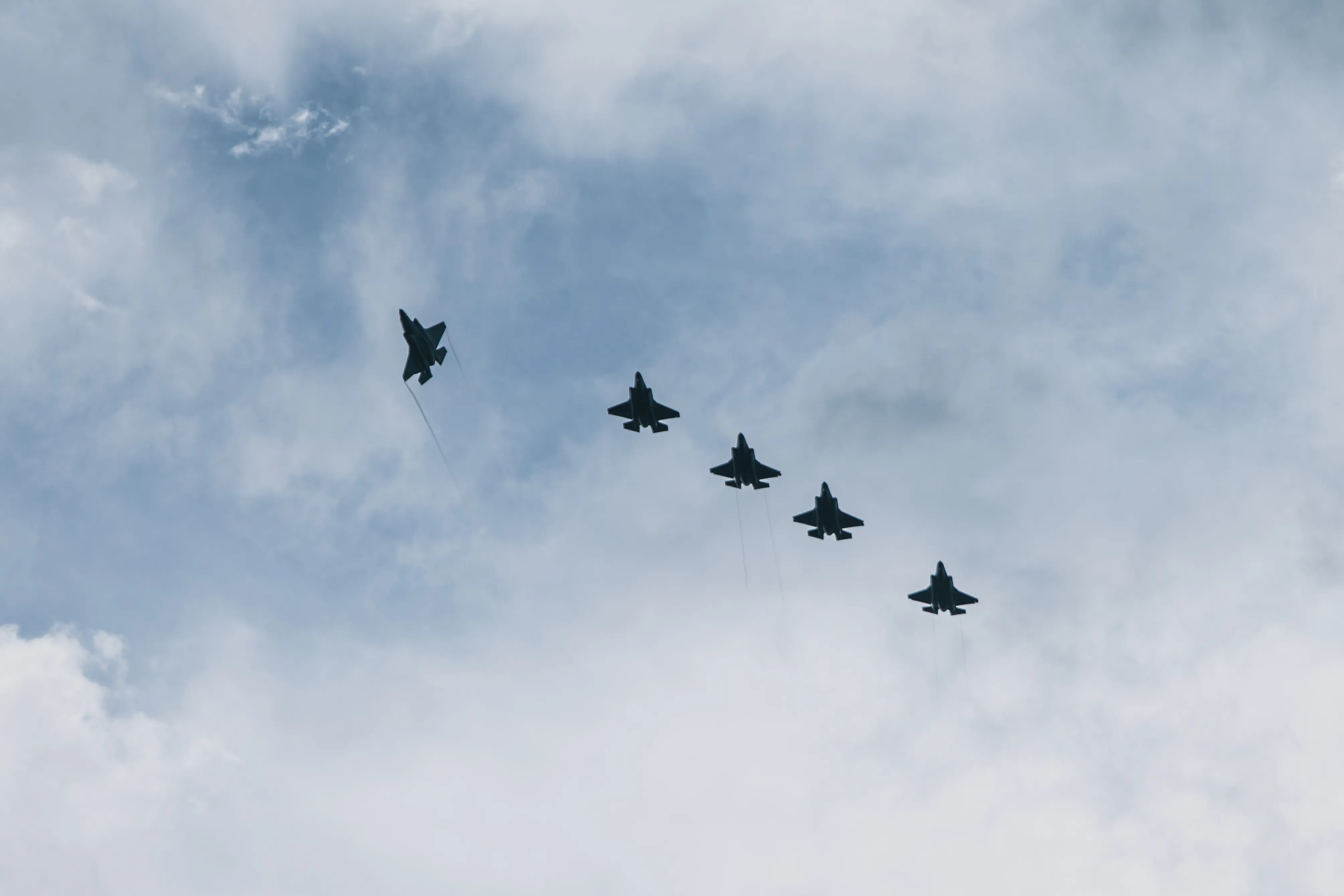The Pentagon has published its first official set of images of USMC F-35Bs forward-deployed to the former Roosevelt Roads Naval Station in Puerto Rico. The jets, 10 in total, first arrived at the installation on September 13th, where they joined a growing mix of forces spread across the region that are taking part in the Trump administration’s counter-narcotics operations.
As more assets arrive in the Caribbean, it’s becoming more likely that U.S. military activities will evolve beyond maritime drug interdiction operations, with the possibility of direct actions inland on cartels becoming a real possibility. In particular, the Trump administration has its eye on Venezuelan strongman Nicolas Maduro and the affiliated Tren de Aragua drug gang.
The F-35 images were taken on September 13th, the day of the jets’ arrival in Puerto Rico, after making the long haul from Marine Corps Air Station (MCAS) Yuma in Arizona, but were just posted today. As we noted in our original report on their arrival, the unit markings have been stripped on the jets, but the captions of the photos state the aircraft belong to Marine Fighter Attack Squadron 225 (VMFA-225), which seems strange if operational security was a major consideration in removing their tail codes and unit markings.
A number of the pictures notably show lightning rods positioned around the jets. This has been a feature of F-35 deployments away from home bases for years now, and has been driven by safety issues tied to the aircraft’s fuel system, as you can read more about here. The F-35 Joint Program Office and manufacturer Lockheed Martin have worked to mitigate those concerns in the past, but clearly lightning strike protection remains an important part of the ground support package for the jets.
The F-35s have already been active on patrols, including those off the coast of Venezuela, according to claims made by open-source flight trackers. Venezuela’s Defense Minister Vladimir Padrino López claimed today that the country’s armed forces had tracked some of the jets flying off the coast in the Maiquetía Flight Information Region (FIR).
TWZ cannot confirm that these operations took place, but the F-35s are clearly there for a reason. As we originally highlighted, using their powerful sensor suite for surveillance and reconnaissance would be one aspect short of kinetic operations of their role in the overall mission.
The F-35s are part of a much larger contingent of U.S. forces that includes ships and thousands of personnel from the Iwo Jima Amphibious Readiness Group (ARG)/22nd Marine Expeditionary Unit (MEU). There are also several Arleigh Burke class guided missile destroyers, a Ticonderoga class guided missile cruiser, a Los Angeles class nuclear powered fast attack submarine, MQ-9 Reapers, strategic intelligence gathering and maritime patrol aircraft, and other assets deployed to the region. Even Ocean Trader, a shadowy special operations mothership, is now prowling the waters of the Caribbean. It could play a central role as a staging point and command and control node for direct action against cartels should the orders come.
While this large U.S. buildup is ostensibly stated as a means to counter drug trafficking in the Caribbean, some officials in the Trump administration are pushing to oust Maduro. The U.S. government first brought drug trafficking and other charges against Maduro in 2020 and is currently offering a $50 million bounty for his capture.
On Thursday, news also broke that President Donald Trump has declared drug cartels to be unlawful combatants, saying the United States is now in a “non-international armed conflict,” according to an administration memo obtained Thursday by The Associated Press, after recent U.S. strikes on boats in the Caribbean.
Congress was notified about the designation by Pentagon officials on Wednesday, an anonymous source told the wire service.
Trump’s declaration comes after the U.S. military last month carried out three deadly strikes against alleged drug smuggling boats in the Caribbean. At least two of those operations were carried out on vessels that originated from Venezuela.
Maduro, meanwhile, says he is gearing up to call a state of emergency should the U.S. attack.
F-35s could be used to strike cartels directly at their inland bases. The aircraft’s ability to penetrate into airspace, even unnoticed (depending on the air defense capabilities of the country), would provide a valuable lower-risk advantage compared to other assets. This is especially true in airspace that is less permissible, where an MQ-9 Reaper, for instance, could not be used with ease. Still, putting pilots at risk vastly complicates any operation and would require a robust combat search and rescue package to be ready to leap into action if something went wrong. This is where a vessel like Ocean Trader could also come in very handy, as a staging point for those reactive operations, as could ships from the Iwo Jima Amphibious Ready Group. The F-35Bs also have the ability to stage operations directly from the USS Iwo Jima itself.
We’ll have to see how this all plays out, but clearly things are heating up in the Southern Caribbean.
Contact the author: Tyler@twz.com
